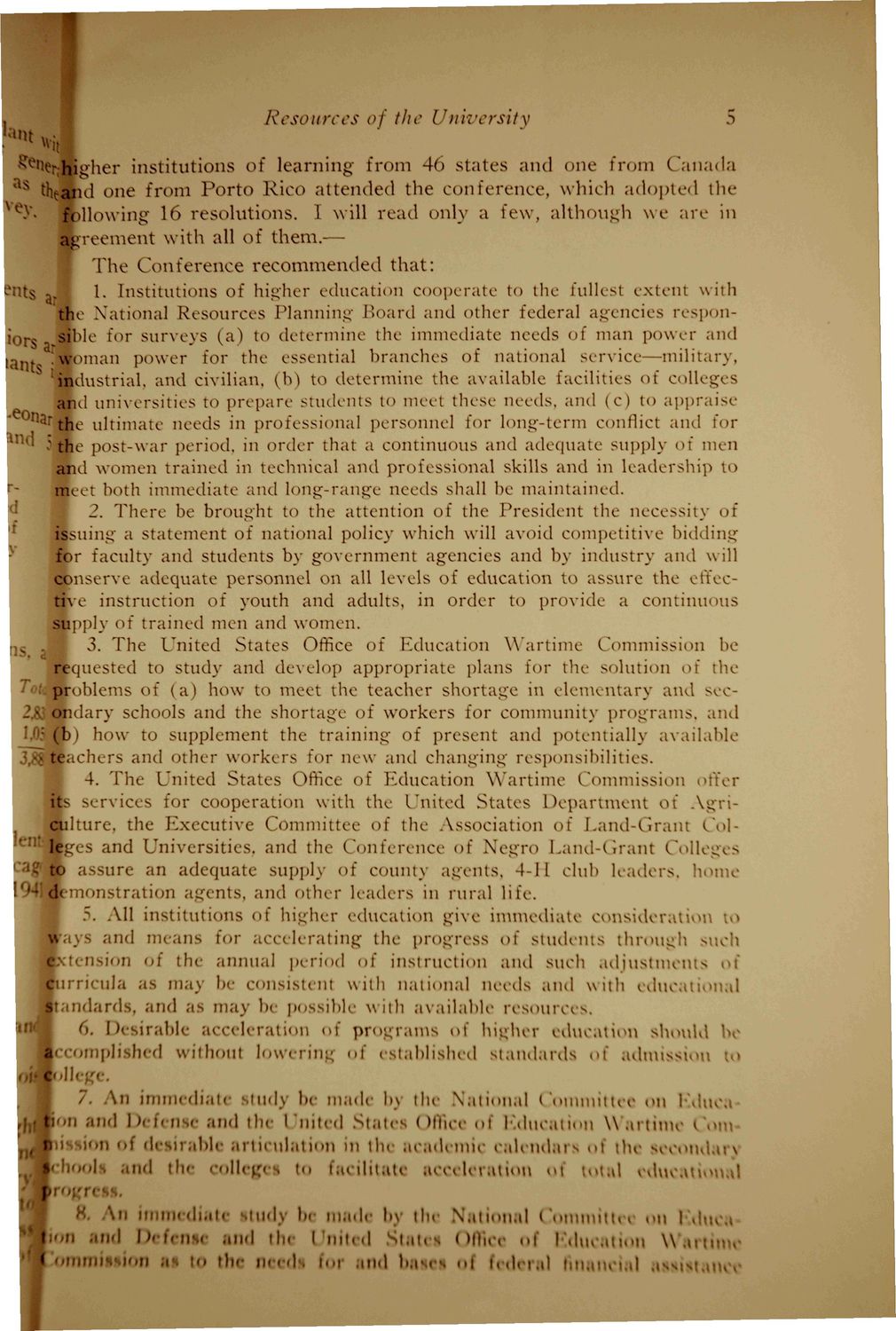Caption: Convocation - 1942
This is a reduced-resolution page image for fast online browsing.

EXTRACTED TEXT FROM PAGE:
, e, Resources of the University H higher institutions of learning from 46 states and one from Canada as G\ and one from P o r t o Rico attended the conference, which adopted the Ve V - « following" 16 resolutions. I will read only a few, although we a i r in preement with all oi them.— The Conference recommended t h a t : t$ 1. Institutions of higher education cooperate to the fullest extent with o National Resources Planning Board and other federal agencies responsible for surveys (a) to determine the immediate needs of man power and woman power for the essential branches of national service—military, n* industrial, and civilian. (M to determine the available facilities of colleges and universities to prepare students to meet these needs, and (c) to appraise ' * the ultimate needs in professional personnel for long-term conflict and for the post-war period, in order that a continuous and adequate supply of men and women trained in technical and professional skills and in leadership t meet both immediate and long-range needs shall be maintained. d 2. There be brought to the attention of the President the necessity of issuing a statement of national policy which will avoid competitive bidding for faculty and students by government agencies and by industry and will conserve adequate personnel on all levels oi education to assure the effective instruction of youth and adults, in order to provide a continuou supply of trained men and women. 3. The United States Office of Education Wartime Commission he requested to study and develop appropriate plans for the solution of the problems of (a) how to meet the teacher shortage in elementary and secondary schools and the shortage of workers for community programs, and (b) how to supplement the training of present and potentially available 3£.' t chers and other workers for new and changing responsibilities. 4. The United States Office of Education Wartime Commission offer it- services for cooperation with the United States Department oi Agriculture, the Executive Committee ^i the Association ^i Land-Grant * >1lei: and Universiti . and the Conference of Negro Land-Grant Colle* to assure an adequate supply of count) agents, 4-11 club lea rs, hom< I' monstration agents, and other leaders in rural life. . All institutions of higher education give immediate consideration to wa; and means for :elerating the progress ^i students through s ch t on of the annual period of instruction and such adjustll ts Curricula as may be consistent with national needs and with edllC i 1 : it; and • may 1" possibl with available rcsoun s, o. D irabl< a < < n of pro rams <>( higher education sin id h 1 pi d without low. rim; of « stahhshed standards ,>i ailuus- m (oil I 7. An inmiedi. iud\ !•• made l>\ the National ( mnmitti < on l\\\ t t. and 1' i and th< i "nit Stati I Miu e of V ducatinn \\ n on i d blc arti ilalion in th< . i-l.nn. cah mini s the • nd the coll , to j.,( ilitatc a 1< i ntion 1 d lu< • 'ud b i ulc b; the < utionnl I mi and th< i nil I Stat< s 01 i I •' the n - unci bn t f< d< I I'm on I n \\ tti tin \ imn t n nd l > < < mi n *
|